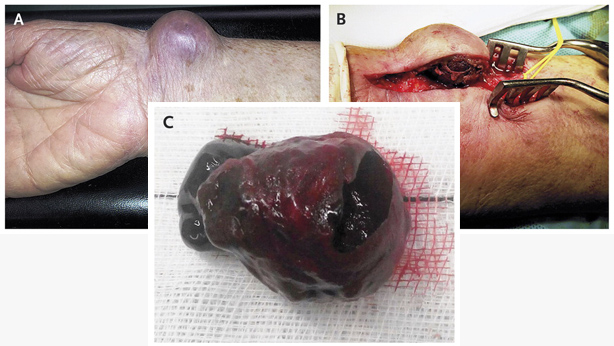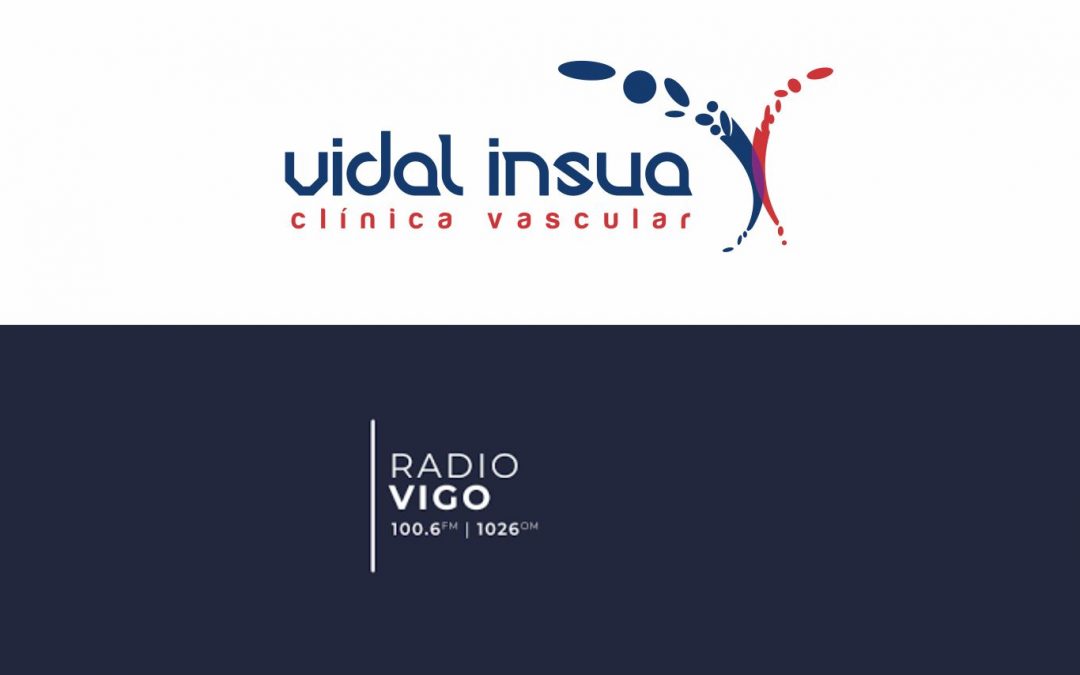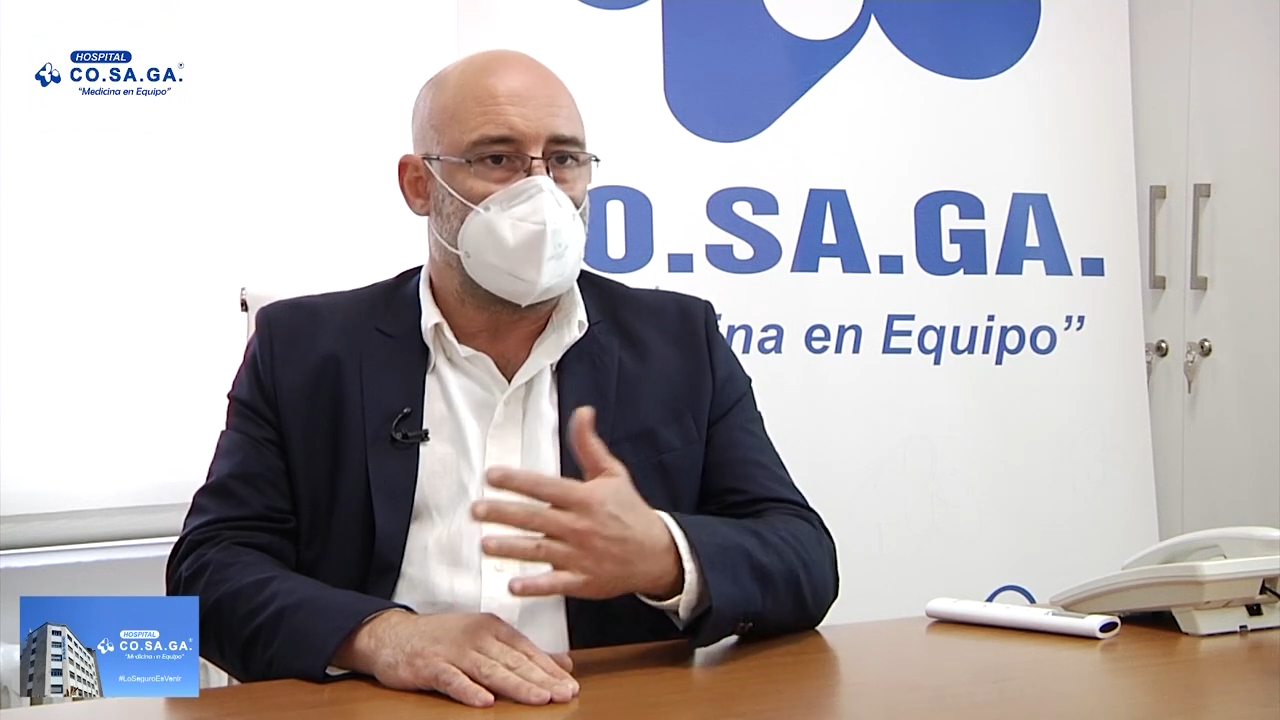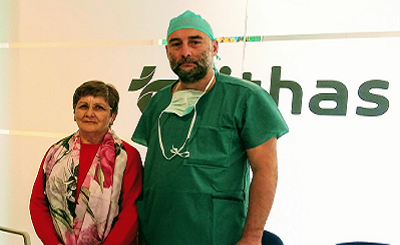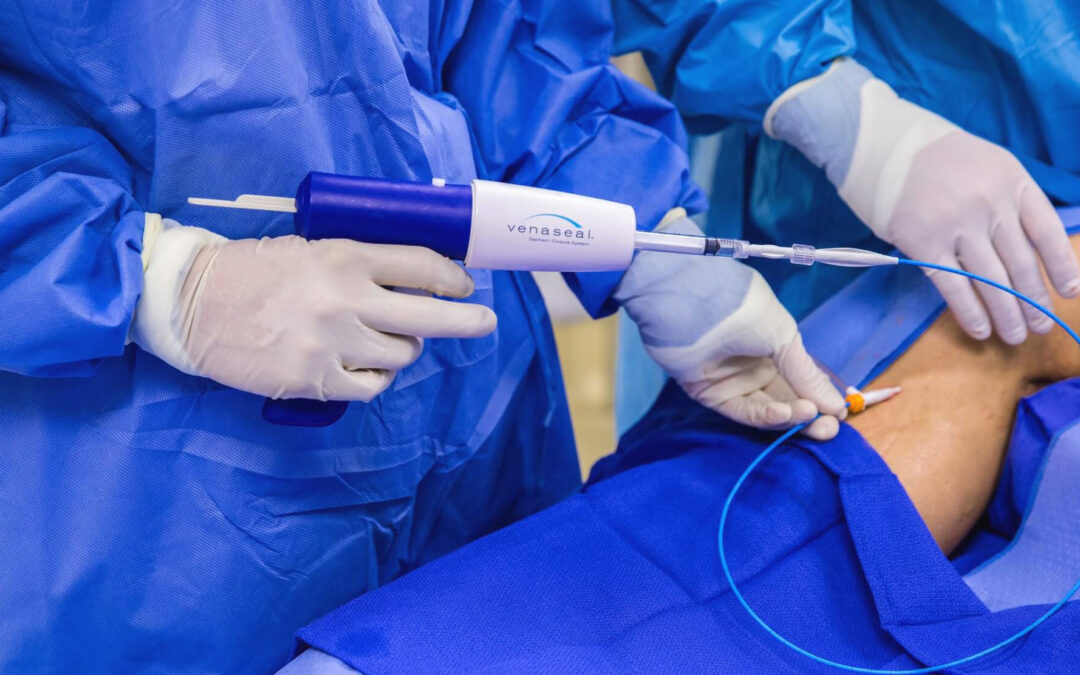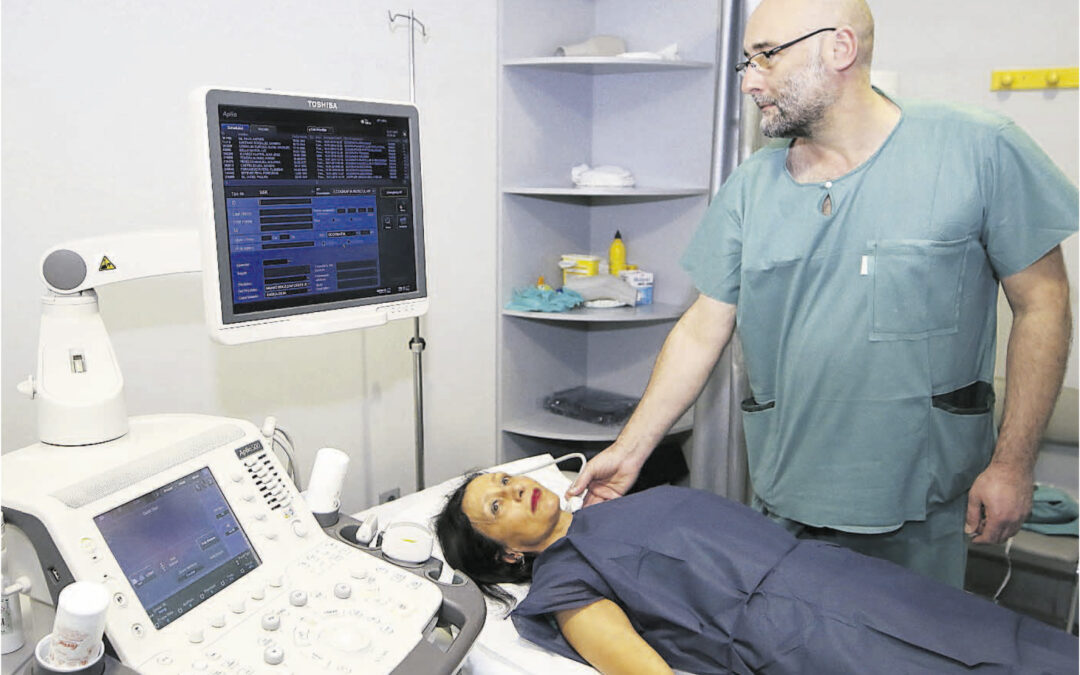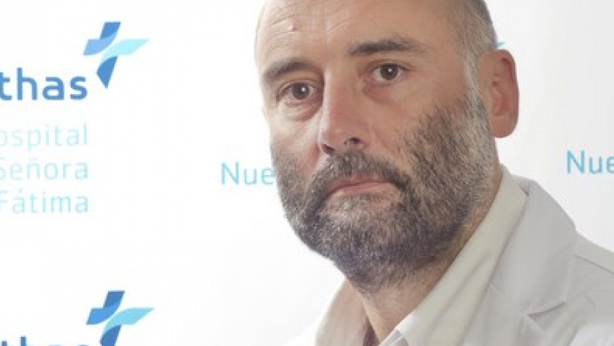An 81-year-old woman presented with a 1-month history of a large, painless, and pulsatile swelling of the right wrist that had progressively increased in size (Panel A).
She had a history of hypertension and mitral insufficiency and was taking aspirin, an antihypertensive medication, and a statin. The patient had undergone coronary angiography with a transradial approach 1 month earlier; a 4-French sheath was used, and sheath removal was followed by mechanical clamp compression. A clinical diagnosis of radial pseudoaneurysm was confirmed on ultrasonography. Pseudoaneurysms occur infrequently as a complication of transradial coronary angiography. Predisposing factors include the use of a large catheter sheath, multiple punctures at the site, the use of antiplatelet and antithrombotic agents, inadequate hemostasis or postprocedure compression, and vascular-site infection. The patient underwent surgical excision of the pseudoaneurysm and suture of the radial artery (Panels B and C). She remained well at follow-up visits both 1 week and 2 months after the procedure, with preserved radial arterial pulse and no residual swelling.

